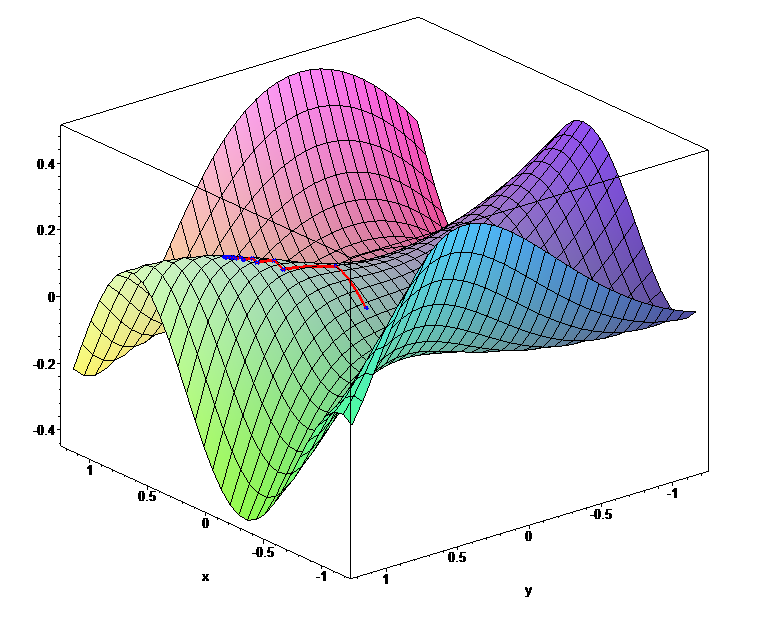I.
Although I wasn’t there when it happened, one of the early myths of Palantir was someone who lived in the office for 30 days. This was 2005-2010 and there were a couple of stories from other tech companies on an engineer not leaving campus for 30 days. The Palantir engineer said, “that’s child’s play. I won’t even step foot outside for 30 days.”
Another evocative mythological workplace: Office Space

Almost everyone can instantly recognize the gray sameness that is a pastiche of 1000 dreary workplaces.
Even if you’ve never worked at Initech or Palantir, you can imagine what it would be like to work there - for better or worse. I think that if you’re in control of shaping a culture, you should carefully consider where you should be more like Initech (or Google/Meta/Microsoft) and where you should be more like Palantir (or Netflix). But first, what is culture?
II.
One way to visualize a culture is the set of incentive gradients that a team collectively builds, with incentivized behaviors at points lower in the gradient. Because people generally take the easiest, most rewarded path, their behaviors will tend to ‘flow’ downhill towards those valleys of incentivized behavior, and exhibiting behaviors out of step with the culture (eg staying higher on the incentive gradient) will take work.

To the extent possible, the role of a leader is to shape those incentive gradients to point in good directions and not in bad directions. Some of these incentive gradients can be set up explicitly, but most of them are built and maintained implicitly, by the systems you build and by the standards you hold. Behaviors will flow downhill whether the gradient is steep or shallow; a steeper gradient means that someone who is resisting the natural gravity of the culture will have to work hard to maintain their position, which can be exhausting or even scary. A shallow gradient moves more slowly, which can be more comfortable.
In this definition, a flat culture is one in which the incentive gradients are shallow - whether they lead to a good or a bad place, they ask very little of the people within the organization. Incentives move slowly, which means that more people can find a fit within the culture because there aren’t “weird” cultural practices that make someone uncomfortable. Flat cultures tend to be safer and less painful.
A pointy culture is one in which the culture has steep gradients. Some people will hate working in that environment, while others will love it and find it to be their natural way of working with fellow travelers who believe the same thing – you know you have a steep gradient when you hear the phrase, “I’ve finally found my people”. Pointy cultures tend to be more polarizing and can be painful to those who don’t like where the incentive gradients lead.
Office Space is an example of a flat culture (though the incentive gradients point in bad directions). Anyone can work there, because very little is asked of the workers - wear a tie, file your TPS reports, and keep the volume low on your radio in your cubicle.
Palantir is an example of a steep culture. Without casting any value judgement on the culture at the time, There are a lot of people who are not going to like a culture that celebrates living in an office building for 30 days. But, it paints a very vivid picture of what it was like to work at Palantir and there are also many people that hear that story and whisper, “I’ve finally found my people.”
III.
Of course, No company is made up entirely of points or is an utterly flat plane. That said, we can talk about cultures that are pointier (they have more extreme gradients along more axes in the culture) or flatter (they have less extreme gradients in more places)
Again, I see these as value-neutral – certainly not every culture should be like Palantir’s was in its early days! But a fully flat culture is also uninspiring and tends to be slow. There is a tradeoff between how strongly some adhere to the culture and how many people can successfully navigate the culture.
As companies grow, they have a tendency towards flattening the culture everywhere – I think this is somewhat due to a need to coordinate larger groups of people, a regression to the mean, and an inherent conservatism as you necessarily move towards a larger bureaucracy.
If you’ve found your culture to be successful due to some pointiness that is now flattening, or are looking for a place to change your culture, you might consider how to build bigger points.
One way to do this is to think about the most important problems you’re pursuing as a company and where your culture might be a competitive advantage. This is a great place to consider being more pointy; build and ruthlessly protect some steep gradients knowing that some people will not be successful but for those who do take to the culture, it will really resonate. For a startup, this might be celebration of shipping extremely fast (“we take customer feedback, go home, hack something together, and show it to them the next day”). For a more established company, it might be customer obsession or elegance.
At Mindbody, we’re trying to build cultural pointiness around efficient and safe manipulation of brown-field code. So much of the world runs on legacy brown-field code and being able to operate in that environment can be a very highly leveraged skill. Not everyone is excited by taking extreme pleasure in refactoring ASP code - and that’s OK, I’d rather those people find something better for themselves so I can find the person who says “I’ve finally found my people.”
You should also ensure you’re not building or maintaining useless incentive gradients. All this does is needlessly constrain the set of people who will be successful on your team without actually providing you any value. A really common source of pointiness I see in startups is in the interview process – the gradient rounds off to “we hire for interview prestige” and is manifested by only hiring from top schools (or requiring a degree at all), or asking challenging hacker rank-style interview questions. There are companies for which this is actually a useful area to be pointy – if you actually need those skills or connections, it will constrain your pool of candidates but those that do pass will bond tightly with their team and will have a great internal story they can tell about themselves and their team. For most teams though, that steep gradient just means that you’re rejecting great candidates with little gain.
IV.
Pick where your culture should be pointy carefully, and maintain it well. Be flat everywhere else. This is broadly similar to Charity Major’s great essay on choosing boring culture. My addition is that you should spend your cultural innovation tokens on the correct steep cultural gradients, rather than just having a differently flat culture.
Thanks to Adam Ingram-Goble, Casey Childers, Neil Kimmett, and Paul Twohey for their feedback